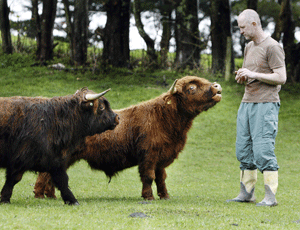Animal Planet has a new show called Pets 101, which follows along the lines of their Dogs 101 and Cats 101 except that it features all different kinds of pets. In honor of the show, Animal Planet’s website has an article that is called the “Top 10 Peculiar Pets.” These pets are not recommended for everyone, and some states or cities may have laws which prevents owning these animals. I have the list below, along with pictures and information.
What do you guys think, are there more strange and exotic pets out there?
10. Capybara
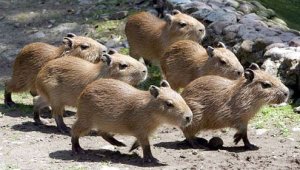
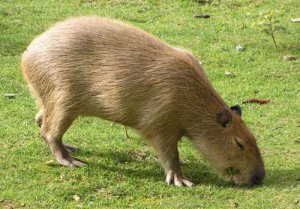
The Capybara is the largest rodent in the world, native to South America, and is related to the domestic guinea pig. They weigh up to 100 pounds when fully grown and are semi-aquatic – meaning they spend a good amount of time in the water.
As a pet: These rodents are never fully domesticated and require a large area to roam, lots of attention, and a swimming area. They eat grass, but you might have to make your own food (not commercially available food in a pet store) to assure your pet receives its nutritional needs. It will also be difficult to find a vet that has enough knowledge to properly see your pet. Capybaras are not recommended as pets for families with small children because they may bite and not tolerant like a dog may be.
Since capybaras require a lot of space and have very special needs, please do a lot of research if this become your pet of choice. But, if you like this kind of animal guinea pigs may be a great alternative. They are relatively easy to keep, can live in a much smaller space, and they are readily available in shelters and pet stores in need of good homes.
9. Stick Insect

Stick insects are now popular pets as they are interesting to watch and easy to care for. Fully grown they can be up to 4 inches long and they can live for several years.
As a Pet: These can be a great choice due to their ease in care. Be careful when handling because their limbs are fragile and can easily come off. Their habitat should be at least twice their length tall so they can hang, should be kept at room temperature, and cleaned weekly. Stick insects are omnivorous and can thrive on things like lettuce and ivy.
Here is a website about caring for stick insects – earthlife.net. I am sure there are more out there, please make sure you know how to properly care for these guys before you get one.
8. Miniature Donkey
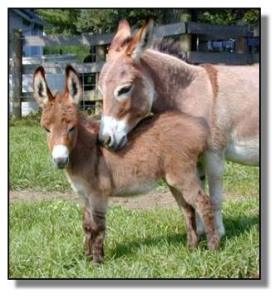
Donkeys are not that strange of pets, but I was not aware they came in a miniature variety! A mini donkey can be around 3 feet tall, and weigh upwards of 350 pounds. These animals make good pets because they are affectionate and also good with children.
As a Pet: Mini donkeys like to live in pairs, so should you want one you need at least a pair. The needs of these donkeys are very similar to full size donkeys – hay, grain, pasture with shelter, and water. They will also need to have their hooves trimmed.
If a full size donkey is not your thing, then maybe a couple mini donkeys are. But remember that these guys still require quite a bit of space and the costs to maintain them will not be small.
7. Hedgehogs
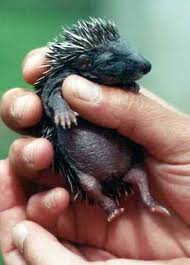

While exotic, hedgehogs may not be hard to find at a local pet store these days. It is believed that they became poplar pets after the release of the Sonic the Hedgehog games.
As a Pet: Hedgehogs are easy to maintain. There are food blends available at pet stores to assure proper nutrition, and insects like crickets can be fed as treats to supplement. While gentle, they need to be socialized to humans as babies. Cages should be large enough to have an exercise wheel, around 30 by 24 inches and at least 15 inches tall. However, they are nocturnal so they will be sleeping mostly during the day and up at night.
Make sure a hedgehog is right for you before purchasing. These animals are gentile but shy at first and remember they are nocturnal – so patience and time are a necessity. You will have to tailor your interaction with your pet around their sleep schedule, not yours (unless you work nights). For more information check out the this Basic Guide for Hedgehog Care.
6. Pygmy Goats
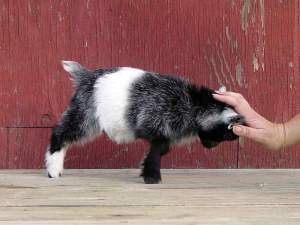

Pygmy goats are very popular pets these days because they are sweet and small in size. It is not uncommon to find these goats at petting zoos in your area.
As a Pet: Fairly easy to care for, pygmy goats still require a bit of space. They should have shelters around 8 by 10 feet and fencing that is 4 feet high. Diet for these little guys includes grass, hay, and leaves. The National Pygmy Goat Association has more information on the proper care of these animals. However, these animals may prove to be a bit too aloof for some owners.
If you have the space and food source for these little guys they can be a good choice over full size goats. I know a lot of people who own and show these guys, and are very happy with them. However, if you are looking for a dog like animal a dog will still be a better bet.
5. Potbellied Pigs

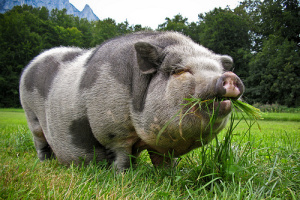
Potbellied pigs have been considered as pets for a while now, due to their cleanliness and intelligence. These animals can be a rewarding investment.
As a Pet: These animals require lots of exercise because they can easily become overweight. Given their intelligence, they are easy to train and can be walked like a dog on a leash. However, there is a downside to the intelligence – if they want food they can learn how to get it for themselves by opening refrigerators and cabinets. Pigs can also be aggressive if they are attempting to be the dominate force in the household, so they are not advisable pets for families with small children. Pigs can live up to 18 years, and can weigh upwards of 125 pounds. For more information on what bringing a pig home can be like, check out Pot Bellied Pigs as Pets.
Pigs are a good choice if you have the time, patience, and space for such an animal. Make sure that you know all about their behaviors – especially concerning young children – and appetite. Pigs can destroy carpet, make hiding food difficult, and destroy your yard so research and consideration is a must before investing in a pig.
4. Sugar Gliders
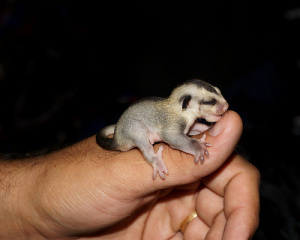
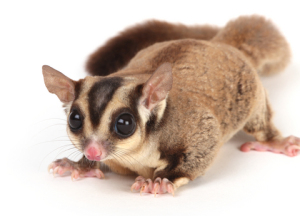
Sugar Gliders are native to Australia, but have been gaining in popularity as pets. They are part of the possum family and have a membrane which stretches from their front to back legs and allows them to glide from tree to tree in the wild.
As a Pet: Sugar gliders are social, and should be kept in at least pairs. They eat cooked meats and eggs, fresh veggies, nuts, insects, and leaves. They can socialize with people, but need to be handled a lot when they are young. These animals need space in their cages to be able to jump from branch to branch. However, they are nocturnal so they will be sleeping during the day.
Sugar gliders are not recommended for children, because they have sharp teeth and claws which can hurt someone who is not good at handling them.
3. Wallaby

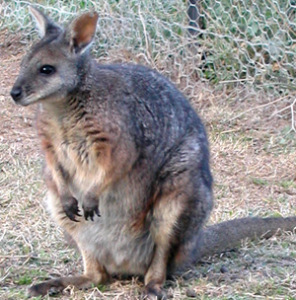
These little marsupials can weigh up to 53 pounds, and be 41 inches long. While small, these guys need a large space to roam.
As a Pet: Wallabies are social animals best kept in pairs. They need to be kept in a large area with a fence that is at least 5 feet tall, with chains along the bottom to keep them from escaping – which these little guys are very good at. They are very shy creatures.
The Marsupial Society of Australia does not recommend keeping such animals as pets in that sense of the word. They are not dog like and do not house train easily – they can become destructive and smelly. These animals will require a lot of your time, but are nocturnal so you would have to adjust your schedule accordingly. They have a lot of special requirements for space and a backyard is simply not big enough. They are also at risk from diseases from more domestic pets like cats when kept in such an environment.
Wallabies are not domesticated animals – and some will tame, others become dangerous. So please, do research and know what you are getting yourself into should this be your pet of choice.
2. Skunk


While wild skunks are smelly, pet skunks have their scent glands removed at 4 weeks of age so that owners will not have to deal with such a problem. Skunks are inquisitive and intelligent, and can live over 10 years.
As a Pet: Time must be spent bonding with these animals while they are young. You can litter train them. They eat a diet like a ferret, with fresh veggies to accompany dry food. For vet care, they need scent glands removed, to be spayed or neutered, and require vaccinations on an annual basis.
Please make sure that your state allows you to own a skunk, many do not. Also make sure that you know of a vet that can take care of your animal before you get one.
1. Madagascar Hissing Cockroaches
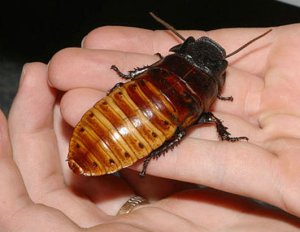
These large cockroaches do not fly, sting, or bite, and make an interesting hissing noise. They make good pets for people or children who like bugs due to their ease of care.
As a Pet: They require a small space to live in, with lots of places to hide from light. They also should have sticks to climb, but they are very good at climbing and will climb right out of their habitat if you are not careful with a lid. It is suggested to coat the top portion of the enclosure with petroleum jelly. They can eat any dry food high in protein (like dog food) and love fresh veggies.
Check to see if you need a permit before buying one in your area. Here is a link to about.com’s care information on keeping Madagascar hissing cockroaches.
Please do your research before considering an exotic or strange pet, this will assure that you are happy with your choice and can properly care for your new family member.
To see the original article, please visit Animal Planet, Pets 101, Top 10 Peculiar Pets.




